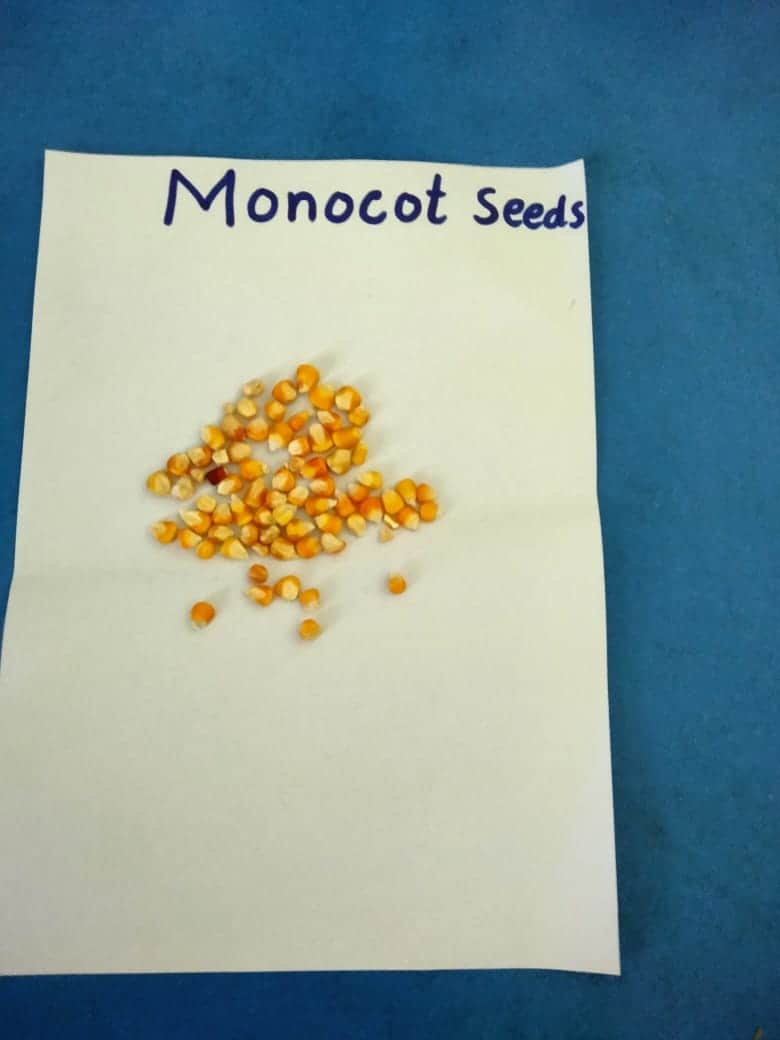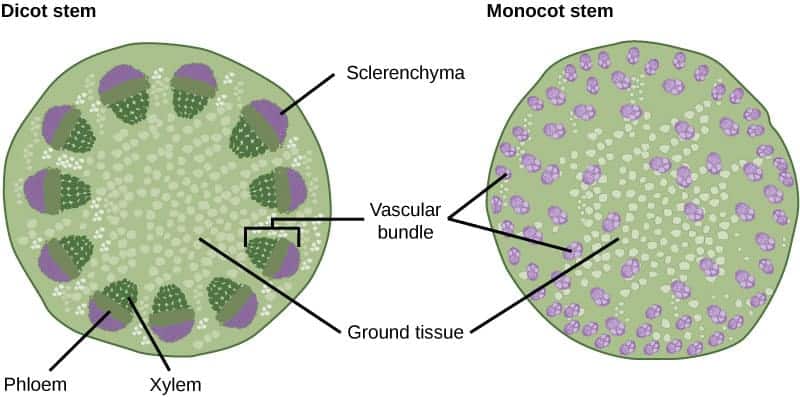As a gardener who grows and sells Corn for a living, I was bound to know about the nature of Corn in my garden.
While researching, I stumbled upon the words ‘monocot’ and ‘dicot,’ so I wanted to know the category my Corn plant falls under.
Corn is a monocot because the single seed of Corn contains only one cotyledon, adventitious roots and leaves with parallel venation. Additionally, the fibrous root system makes the Corn plant a monocot.

This may sound like some scientific babbling, but do not worry; I have simplified things so you can understand better.
Read this article further to understand the nature of Corn in detail.
Table of Contents Show
Introduction to Corn
Corn (Zea mays), also called Maize, is a popular, nutritious edible grain. It is laced with starch, carbs, proteins, and other essential nutrients.
There are six varieties of Corn, namely, flour, sweet, flint, pod, popcorn, and dent corn, among which popcorn and sweet Corn are pretty famous.
Due to the abundance of varieties, Corn and its seeds can be easily found on the market. Let us look at the basic features of Corn.
| Indicator | Identity |
|---|---|
| Scientific Name | Zea mays |
| Common Name | Maize |
| Family | Grasses |
| Hardiness Zone | Zone 4-8 |
| Native Area | Mexico |
| Growth Size | An average of 3 meters |
| Grown For | Staple food Energy Source Livestock Feed |
| Flowers | Male flowers grow on the top of the plant, while the female flowers grow between the leaves and stem. |
| Availabilty | Easily Available |
| Toxicity | Mild Toxicity |
Is Corn Monocot or Dicot?
Although this question should not haunt you anymore, I understand if you are confused.
The simple answer to this question is that the Corn plant is a monocot.

All the varieties of the Corn plant, like sweet Corn, guinea Corn, etc., are also monocots because they have a single cotyledon.
There are certain reasons associated with why the Corn plant is called a monocot. Let us look at the conditions that make them monocot.
- The seeds of the maize plant have a single cotyledon.
- Unlike dicots, the maize plant has adventitious roots.
- They do not produce any secondary growth like wood and bark.
- The flowers in maize plants are arranged in a group of three.
- Vascular bundles in the maize plants are scattered.
If you are lazy and do not want to check everything above, you can just look at the seeds. If they are not divided, your plant is a monocot.
For example, take a single pea in one hand and the Corn in another. Remove the outer covering of the pea, and you will witness a division in the seeds; that’s a dicot.
Whereas the Corn seed will not have any divisions, that is monocot.
Monocot vs. Dicot
Monocotyledons and Dicotyledons have some vast differences in their characteristics and growth habits.
Some examples of monocots are Anthurium, Coconut, Onion, etc., and dicots are Daisies, Roses, Beans, etc.
The major difference starts from the early stage, just after germination between these two types of plants.
Differences between these two can be seen in their leaf, stem, flower, fruits, and roots.
1. Root
The monocot plants contain a fibrous root system which means their numerous roots are spread in different directions.
To be more specific, the Maize plant has adventitious roots. Their roots can grow from any point other than the root axis.
On the other hand, Dicot plants contain a tap root system, which grows vertically below the soil surface.
2. Leaf Shape
The leaves in monocot plants are long and narrow and identified by their long parallel veins. The long leaves of monocot plants have a downwards-hanging appearance.
While in dicot, veins are well-branched, spreading on either side from the center.

3. Embryo
The embryo monocot contains only one cotyledon during the seeds’ germination. Meanwhile, a dicot has two cotyledons during the seeds’ germination.
To simplify, the seed leaf of the monocot represents true leaves, whereas the cotyledons of the dicot do not.
4. Flower
You can easily see the difference between these two plants by their petal and the number of flowers present.
Flower parts are present in monocots in the multiple of three. Pollination on such plants is usually taking place by the wind.
Contrary to monocots, flower parts are generally multiple of four or five in dicot plants. Insects such as bees and butterflies carry the pollination in dicots.
5. Fruits
Their trilocular fruit specifies the food in a monocot, having three cells and cavities.
The seeds are normally large and flashy. However, fruit-bearing is a rare occurrence in dicots, and when they do, they have pentalocular fruit.
I hope this video also might be helpful.
Similarities Between Monocot and Dicot
There are some similarities despite the many differences between monocot and dicot plants.
As both plants belong to the type of flowering plants, here are some major likenesses:
- Both belong to angiosperms, i.e., flowering plant species.
- Both have pollen, ovaries, and stems.
- The stem contains cuticles in both flowering plants and single-layer epidermis.
- Dicots and monocots include the xylem and phloem to transfer food and water.
- Both produce seeds and flowers during the mature stage.
There are more similarities, but let us not turn everything technical for you.
Conclusion
To summarize, Corn belongs to the monocot plant as it contains only one cotyledon in the seeds.
It is seen that Corn is distinguishable from dicot plants in terms of other features like their leaves, stems, flowers, and root.
Though the Corn plant shares some similarities with dicots, the overall characteristics of the Corn plant signify that they are monocots.
Happy gardening!


